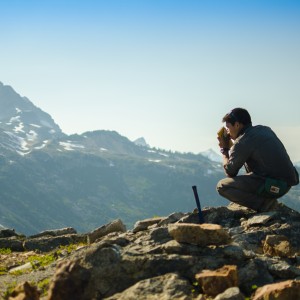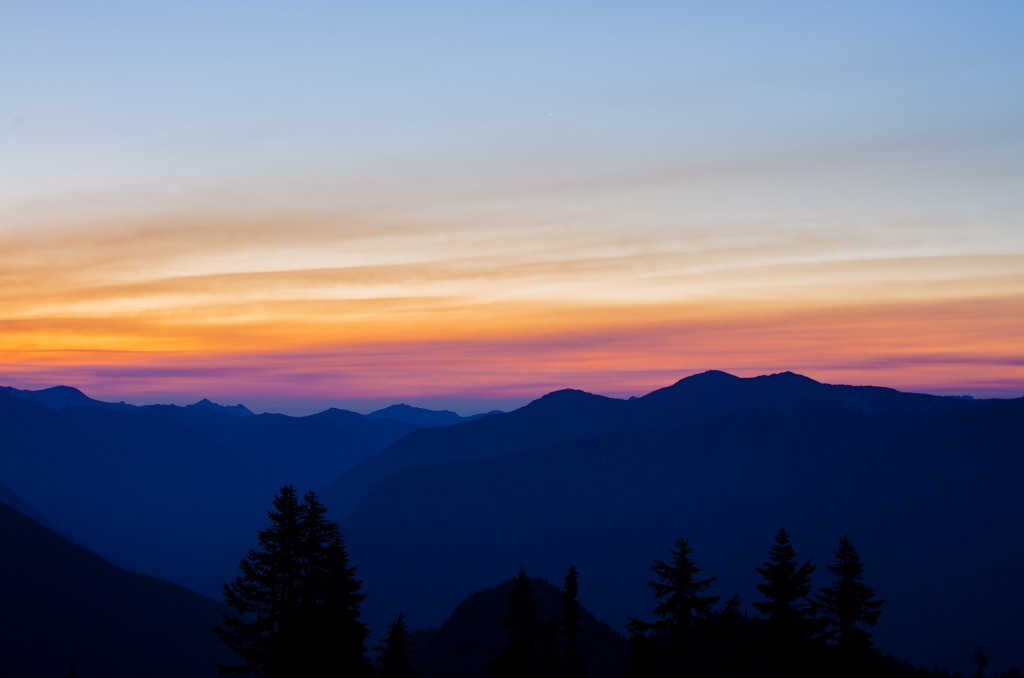A picture tells a thousand words, but even then it is often not the whole story. Geologic field research is frequently idealized in many people’s minds by the scenic landscape photographs that we take – open forests in beautiful river valleys, lush meadows along the tops of ridges, picturesque deserts, unbelievable views at the peaks of mountains… and, at its best, field research is indeed conducted in places like these. Last summer, for example, I spent 6 weeks gathering data for my senior thesis in the North Cascades, WA:

But amazing landscapes, although of course some of the best parts of our research, are only a small and arguably inconsequential part of the big picture.
Almost the entirety of the research that goes on in geology fails to be captured in the idealized photographs that most people see. To just touch upon some of the work that goes on behind the scenes, researchers have to prepare funding proposals, read the literature that relates to the problem at hand, manage a budget, analyze samples in a lab, and collaborate with other researchers. Although each of these components of research are critically important, today I want to explore one particular challenge that I grappled with over my field season this past summer.
My project examined a fault zone to try to understand how a rock unit that formed deep in the Earth’s crust was exhumed to the surface in rapid geological time scales. We do that by mapping the bedrock in high detail and collecting samples at key locations. However, geologic data collection is inseparable from the whims of nature. Although I had carefully planned out an itinerary that maximized our chances of finding meaningful rock outcrops, I ran into a few problems: thunderstorms prevented us from working along the tops of ridges, slopes that appeared climbable on the topographic quads turned out to be cliffs, outcrops were buried under absurdly thick vegetation, clouds limited our visibility to <50m – the list goes on. And in addition to all of this, the field observations we were making often challenged our original hypothesis, encouraging us to traverse to areas we had not originally planned to go to. At times these complications were mentally exhausting. When you’ve spent half the day climbing up steep slopes absolutely covered in fallen trees with mosquitos and flies destroying your face, then battling through the thickest brush you’ve ever seen, only to find that the rock outcrops you had hoped to find are completely covered in vegetation, it’s hard to not feel at least somewhat defeated.
The key is adaptation. Field work is inherently unpredictable. Nature throws many curveballs, and new field observations constantly update our original hypotheses. Therefore, a field geologist must be prepared to think on his/her feet and rapidly adapt to constantly changing situations. With some innovative thinking, determination, and persistence, any problem can be overcome (or as Doc Brown from Back to the Future would say, “If you put your mind to it, you can accomplish anything.”). Sometimes this means rethinking which areas are most likely to hold the key to a mystery, and at other times it means coming up with a new way to tackle the problem. For my project, I just had to “work in from the edges” to infer what was in those areas that I couldn’t access by studying the areas I could.
Although these anecdotes come from my own geologic experiences, the same sentiments apply to all research in the natural sciences. Our studies are all focused on understanding the world around us – and when studying nature, we are inevitably and totally bound to its power. You may not have a thunderstorm hampering your data collection, but you may have an unexpectedly uncooperative human subjects, or apparently incompatible cosmic observations. But much of the excitement of research lies in its constantly baffling nature, and a willingness and ability to adapt is always a step in the right direction around any problem. If you are able to keep that in mind, at the end of the day you will find that the rocky road of research always leads to a beautiful conclusion:

– Yuem Park, Natural Sciences Correspondent

